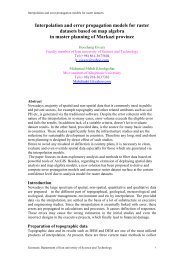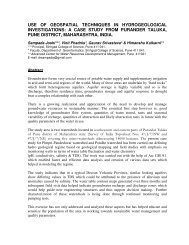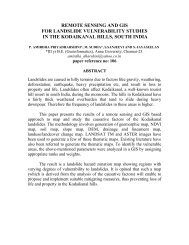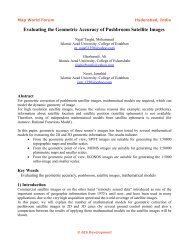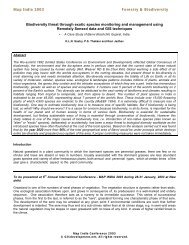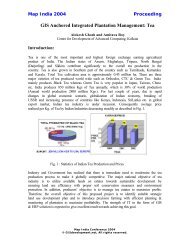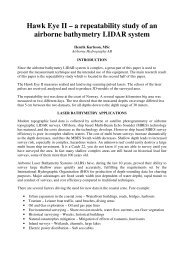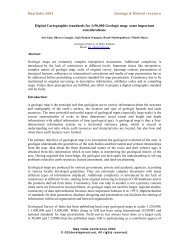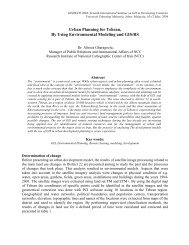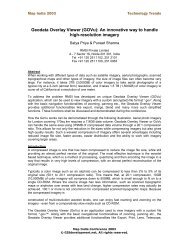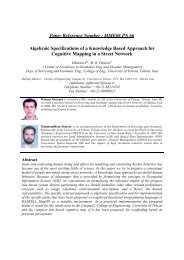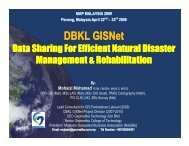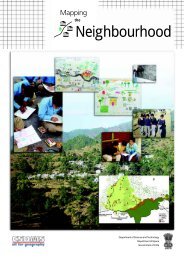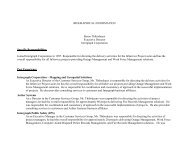Map India 2005 Geomatics 2005
Map India 2005 Geomatics 2005
Map India 2005 Geomatics 2005
You also want an ePaper? Increase the reach of your titles
YUMPU automatically turns print PDFs into web optimized ePapers that Google loves.
The haphazard exploitation activity of corundum by the local entrepreneurs along<br />
certain faiths and beliefs, is going on in this area over a considerable period of time. The<br />
state authorities have investigated these areas where exploitation has been done and<br />
reported in their annual technical reports (DMG 2001-2002). Some of the previous<br />
contributions from the geologists who have studied this area, which is a part of<br />
Khammam Schist Belt, on the geology and petrogenetic evolution as it occupies pivotal<br />
position among the various litho units of the schist belts in the eastern Dharwar craton<br />
include (Balakrishna & Subbaraju (1976), Sarvothaman H. (2001), Leelanandam &<br />
Narsimha reddy (1985), Ramakrishnan.M etal (1998), Ramam&Murthy (1997). The<br />
geology of corundum occurrences have been a subject of considerable economic<br />
importance and many workers in recent times have contributed on this subject<br />
(Chandrasekhar, H and Nazeer Ahmed (1994), Devaraju, T.K. and Alikhan, M.A., (1981),<br />
Gandhi Prasad et.al. (1984), Panjikar et.al (1985), Rama Rao B. (1962), Ravindra<br />
et.al.(1990) Viswanatha M.N. (1972), Dayasankar et al.(2001) Narayan Sangam(2002)<br />
Narayan Sangam & Pavanaguru(2002). Narayan Sangam(2004)<br />
The area of investigation poses several complexities with respect to its geology,<br />
structure and tectonics in view of the nature and controls of corundum mineralisation. As<br />
no comprehensive work on with regards to its petrogenesis and mineralisation has been<br />
done in the past, systematic investigations were attempted using the techniques of<br />
Remote sensing and GIS. Integrated remote sensing methods, incorporating distinct<br />
themes have been emphasized to facilitate the identification of zones of mineralisation of<br />
corundum in this area.<br />
Data Used:<br />
Remote sensing studies using IRS 1C/1D LISS III Geocoded FCC image dated<br />
Feb. 99 has been utilized and interpreted and different overlays of information<br />
concerning geology, structure, geomorphology, drainage has been synthesized to arrive<br />
at a meaningful solutions. SOI Toposheets(65c/7&65c/8) and Geological map(GSI) were<br />
also utilized for this study.<br />
Geology of the area<br />
The Lakshmipuram area is a part of the Khammam schist belt. It is situated along<br />
the northern continuity of the Nellore schist belt, south of river Godavari. The Geological<br />
2



